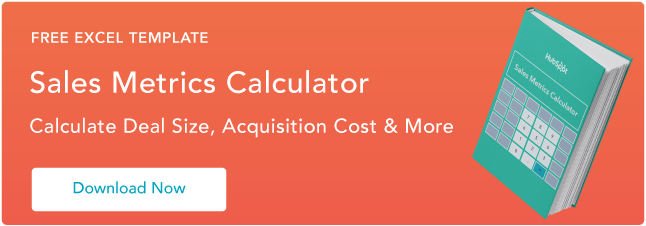If you’re measuring sales success against only your number of closed deals — you’re doing it wrong. One important sales metric to track besides customer acquisition cost (CAC), win rate, and average contract value (ACV) is your lead velocity.

In this article, we’ll discuss what lead velocity is and how you can calculate this sales metric.
Is lead velocity rate the most important sales metric?
Jason Lemkin, the founder of SaaStr, believes the lead velocity rate is the most important metric for sales teams, especially those in SaaS, to measure.
He says, “Your monthly sales tell you about the past, but a pipeline report is cr*p for predicting the future since they are more often about hope than truth. Pipeline for this month is useful, but depends on how various reps estimate (read: guess) their probability of closing right. Next quarter’s pipeline is only slightly better than a guess.”
“Qualified Lead Velocity Rate (LVR) is real-time, not lagging, and it clearly predicts your future revenues and growth. It’s more important strategically than your revenue growth this month or this quarter,” Lemkin adds.
But what is LVR, and how should you measure it? Let’s get into that below.
Lead Velocity Rate
The lead velocity rate calculates the real-time growth of qualified leads month over month. It’s often considered the best predictor of future revenue and can be unaffected by seasonality or team quality.
What is lead velocity rate?
The lead velocity rate calculates the real-time growth of qualified leads month over month. It’s often considered the best predictor of future revenue and can be unaffected by seasonality or team quality.
Use this formula to calculate your lead velocity rate:
Title: Lead-velocity-rate-calculation
It’s important not to confuse lead velocity with sales velocity, which measures how quickly deals move through your pipeline and generate revenue. Lead velocity rates focus on the growth of the number of leads coming into your pipeline, not how fast they’re moving through that pipeline.
Sales metrics tools can help you keep track of your LVR.
How to Calculate Lead Velocity
If you run a SaaS business, for example, you could plug in your numbers to the above formula to measure your lead velocity rate:
Qualified leads in June: 50
Qualified leads in July: 55
(55 – 50) ÷ (50 x 100) = 10%
This means your lead velocity rate is 10% between June and July. If you wanted to calculate your annual LVR, you’d have to find the growth rate percentage for each month, then find the average by adding them all together and dividing the sum by 12.
Here is another example of how to calculate lead velocity from an excerpt from Lemkin’s book, The Predictable Revenue Guide to Tripling Your Sales. It uses dollar values instead of the number of leads.
“So if you created $1 million in new qualified pipeline this month, and created $1.1 million in new qualified pipeline the following month, you are growing LVR at 10% month over month. So, your sales should grow 10% as well after a period of an average sales cycle length.”
“Once EchoSign hit $1 million in revenue run rate, we set an LVR growth target of 10% per month. Once we hit about $3 million in run rate, we dropped it to 8% growth per month. The goal of 8% per month was to produce enough leads to grow the business at least 100% year over year.
“We hit the lead generation growth goals — the LVR goals — just about every month, and certainly every quarter, and every year. And by hook or crook, enhanced with an ever-improving sales team and an ever-improving product, the revenue growth followed.
“The growth wasn’t like clockwork every single day. But it emerged clearly over time — every quarter, every year. And one great thing about LVR is while sales can vary a lot by month and quarter, there’s no reason leads can’t grow every single month like clockwork. Every. Single. Month.”
Think you’re ready to track lead velocity rates in your sales team? Check out The Ultimate Guide to Sales Metrics, first.
Get HubSpot Sales and Performance Reports
Meeting Your LVR Goals and Hitting Your Quota
Having a real-time indicator of growth is a huge advantage for your sales team and your business. If you expect a seasonal dip in sales, you can adjust your lead velocity to bring in more leads. If your reps are trailing on quota for the quarter, you can get more qualified leads to give your team the boost they need to meet their goals.
However, for your lead velocity rate to be valuable, your leads must be qualified so that reps can close them and you can have an accurate sales report.
Editor's note: This post includes an excerpt from the book The Predictable Revenue Guide to Tripling Your Sales, and is published here with permission.








![Understanding Sales Variance [Formula + Examples]](https://blog.hubspot.com/hubfs/Sales%20Variance.png)


